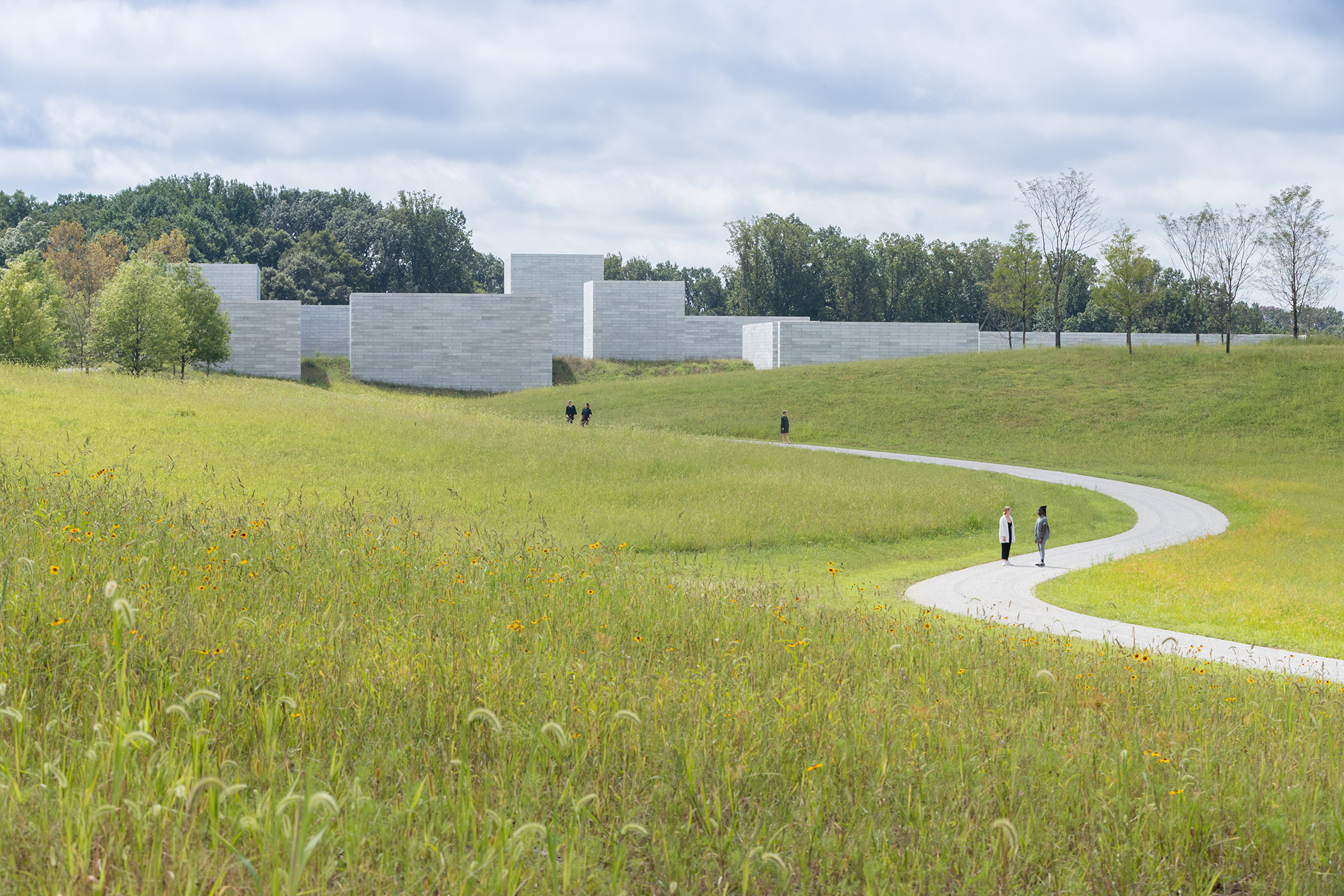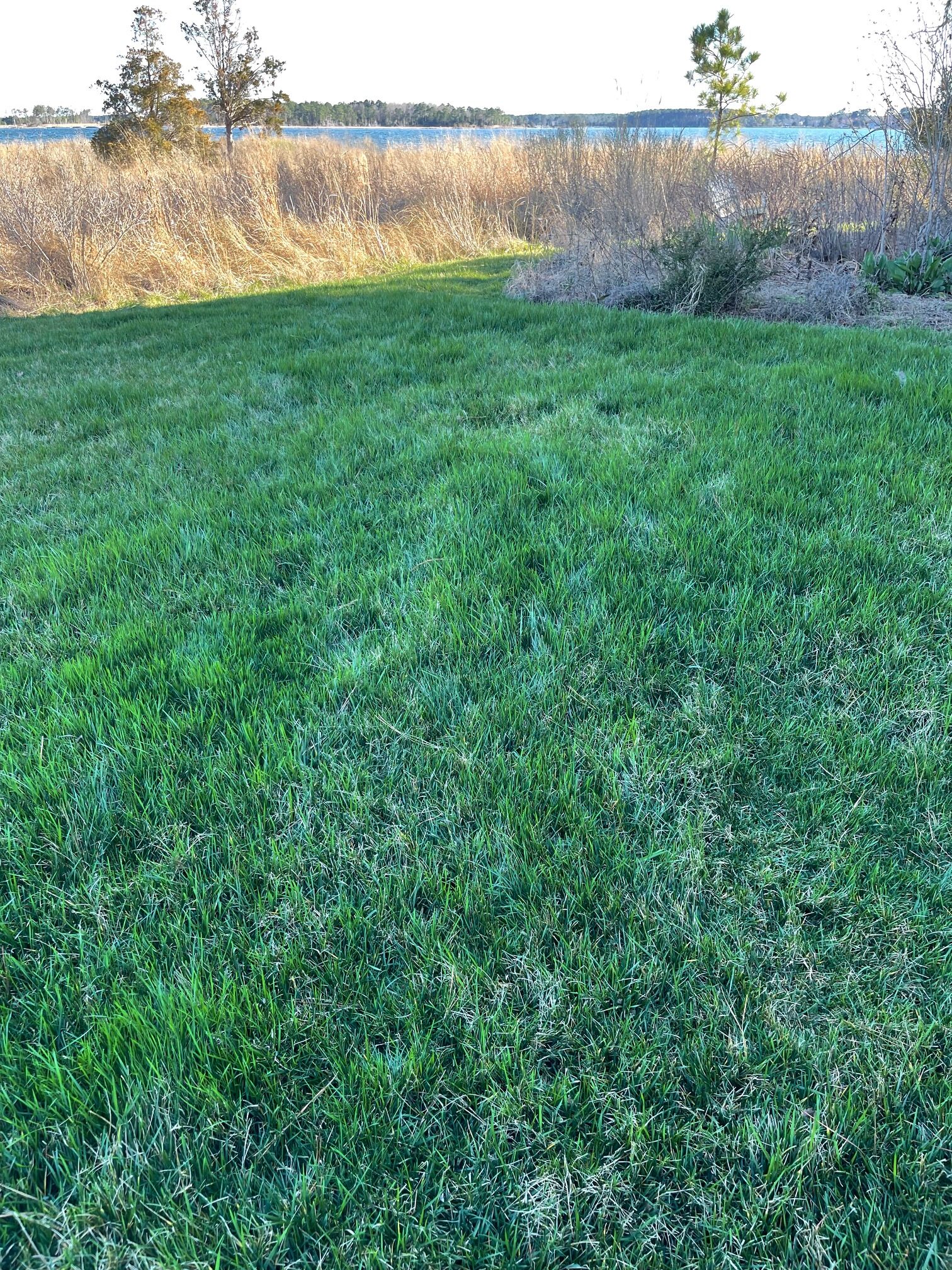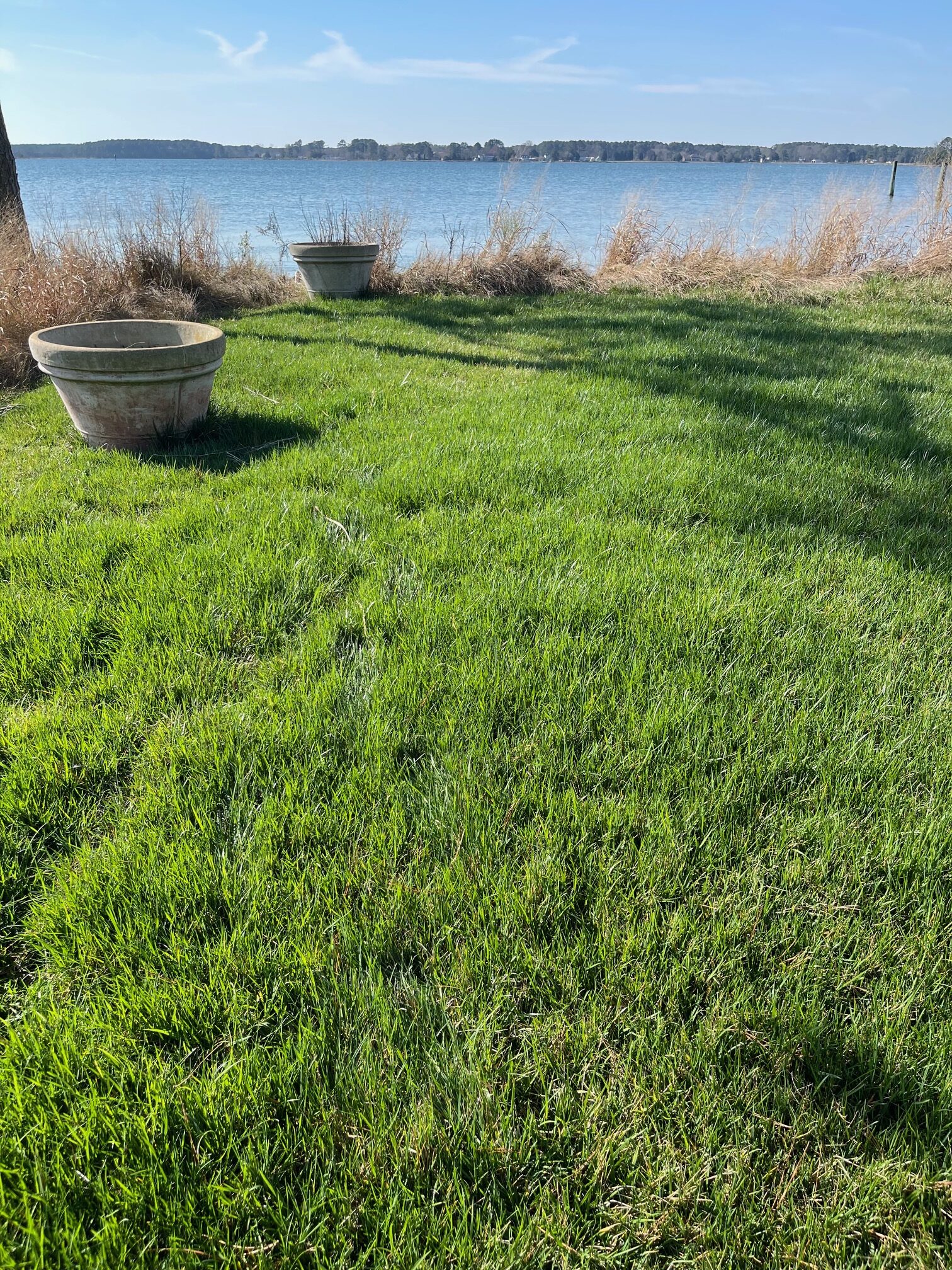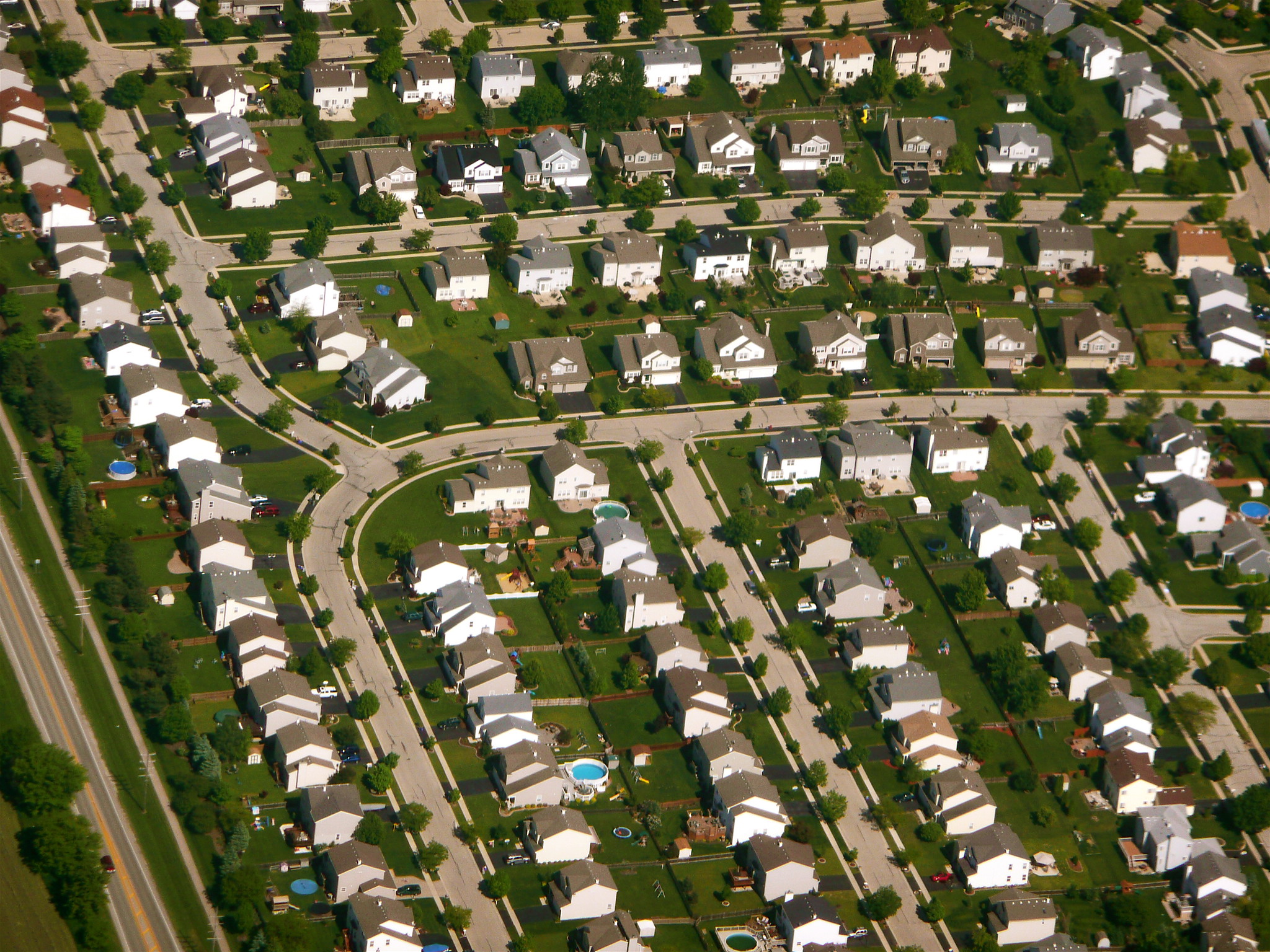Author: Anna Aquino
Beauty is in the eye of the beholder, and if you are a bee, a messy mixed species lawn is your Mona Lisa.
Photo by “Scorpions and Centaurs.” Titled: “Chicago suburbs from the air.” Copyright belongs to the creator. Photo location: https://www.flickr.com/photos/sshb/2912708983/in/photostream/ Photo License Information: Attribution-NonCommercial-ShareAlike (CC BY-NC-SA 2.0)
Who doesn’t like the look of a finely trimmed lawn? Beauty is in the eye of the beholder, and if you are a bee, a messy mixed species lawn is your Mona Lisa. Lawn, whether a manicured monoculture or a “natural” one, can be essential for a sports field or a gathering place. A lawn slows down surface water runoff, however if the lawn is managed with synthetic chemicals, the water carries the synthetic chemicals along to rivers and oceans. The mowed lawn is an ecological wasteland, it is a “dead zone of chemicals and fuel-belching machines that scares away birds and bees.”(1) Highly managed monoculture lawns are thirsty not only for water but also for pesticide, herbicide, and fertilizer and married to petroleum fuels with their nasty exhausts.
In the United States, we have 30 million acres of lawn, that’s about only 6 species of plants covering an area the size of the state of New York. Why lawns, you may ask? Lawns became status symbols, and remain that way today. With the introduction of O. M. Scott’s Weed ‘n’ Feed in the 1940s and televised golf tournaments on color TVs in the 1960s, everybody wanted a fairway green lawn. In one generation, with golf champions as pitchmen for lawn care products, Americans went from owning 35,000 mowers in the 1940s to 4 million mowers in the 1960s. (2)
These traditional lawn areas are unrealized potential, missed opportunities. Traditional managed monoculture lawns could be planted with native trees, reference Doug Tallamy’s seminal book Bringing Nature Home. Plant oaks! he implores; trees provide for wildlife, manage stormwater, store carbon, produce oxygen, and substantially reduce heat islands. Consider switching a managed monoculture lawn to mixed species including dandelions (yes dandelions), clover, other herbs, native grasses, and sedges that provide for native wildlife, especially birds and pollinators and are exempt from the intense spraying and mowing schedules that are necessary in manicured monoculture lawns. With the recent uptick in awareness of our environment and threats to it, there is a chance the perception is going to flip where naturalized lawns, organically managed lawns, meadows, herbaceous plantings, trees, and leaf litter replace managed monoculture lawns, and the perception of these homeowners will be that “here lives someone who cares about the fate of the planet,” communicating unparalleled status and regard.
These traditional lawn areas are unrealized potential, missed opportunities.

“Approach to the Pavilions” — photography credit to the Glenstone Museum, shared with permission. www.glenstone.org
Here are some alternatives, improvements, and resources:


Pictured above, two views of Anna Aquino’s certified organic lawn.
- Certified Organic Lawn Care: If you are ready to dispense with a managed lawn dripping in chemicals perhaps when you see your children and pets playing, or birds foraging in a recently treated yard where the morning dew has reactivated the chemicals, start with Paul Tukey’s Organic Lawn Care Manual. (3) Mr. Tukey suffered healthcare disasters when running his synthetic lawn care company, and upon the advice of doctors, he pivoted to organic lawn care. Mr. Tukey spearheaded Glenstone Museum’s (4, see below) revolutionary organic and sustainable grounds management. He spoke to Capital Trees, and the inspiration and information he provided is one of the reasons Capital Trees embraced sustainable and organic management of its public landscapes three years ago. Mr. Tukey warns to beware of companies offering “organic” lawn care with all its wiggle room, you must ask for certified organic.
- Reduce monoculture lawn size: Replace lawns with trees, planting beds, and native broadleaf groundcovers, and replace turf grass with ”Low Mow” and “No Mow” lawn alternatives (5) that feature short sedges and clover and fine fescues and short-statured grasses. Native grasses and perennials provide habitat and produce nectar and seeds to benefit wildlife. No Mow lawn seed mixes and eco-grass blends are infrequently mowed to maintain a height of about 6 inches. (6) Pollinator sod…it’s coming. Va Tech is working on it, (7) along with VDOT, as are other agriculture schools and businesses. (8) Purchase no mow grass seed mixes. Native seed mixes are available from the Xerces Society, Ernst Seed, and Prairie Nursery, for example. Check out Hoffman Nursery’s website for excellently presented facts and charts to assist your research, and have your landscape professional shop in quantity from Hoffman Nursery, just down the road in North Carolina. Trays of robust plugs will arrive in FedEx cardboard boxes. Sedges are excellent lawn alternatives; native sedges are mostly for shade. For sun, among other species, Hoffman offers Buffalo grass (Bouteloua dactyloides), and it only requires 1.5 inches of water per month. (9)
- Matrix Plantings: Employ matrix plantings to replace monoculture managed lawns. In Greenlee’s book The New American Meadow Garden, discover this planting method that emulates nature, vis-à-vis The High Line, NYC. For example, a grass or sedge is planted in a matrix (a loose grid) and interspersed are various other plants for structure and massing. (10) Read an excellent article on matrix planting, “The Matrix Approach to Garden Design,” Horticulture Magazine, February 2023. “Eschewing amendments and power tools, it’s based on an elegantly simple principle: to garden more like nature does.” A.k.a. wildscaping means shifting from thick bark mulch that keeps plants in an establishment phase, and letting plants self sow and form a matrix of roots enhancing resilience and reducing weed invasion. Many sedges tolerate our humidity, some full sun. (11) At Capital Trees Great Shiplock Park, we installed a matrix planting of native perennials encircling our rain garden. If you haven’t visited Glenstone Museum in Potomac Maryland, it’s a short two hour drive to see extraordinary contemporary architecture and art, and state-of-the-art grounds of sunny native plant meadows, and lawns of Pennsylvania sedge, Carex pensylvanica, and it’s the home of the visionary Paul Tukey (see above).
- Mow Less: Mow grass less often. If you have a mixed species lawn without chemicals consider letting plants flower, even set seed, to provide for wildlife between cuts. As we do at Capital Trees’ Low Line, consider reducing the frequency of cutting grass to reduce our carbon footprint, especially in the hottest and driest months of July through September where there is often little growth due to summer drought. In fact, consider “No Mow April”as well, which is an effort to help tide pollinators over till May, as there are fewer and fewer nectar producing plants available to them in early spring. (12) Bee City USA and Bee Campus USA are initiatives of the Xerces Society for Invertebrate Conservation that Capital Trees is sponsoring along with Richmond Parks and Recreation and the four Richmond clubs of the Garden Club of Virginia to encourage Richmond government and local institutes of higher learning to pledge to protect pollinators in an array of ways. Richmond is now looking at its weed ordinance to allow for and encourage people to provide meadows in their yards. And while we’re on the topic, Americans must pull the plug on mosquito companies; please see the Xerces Society article “Mosquito Management at Home.” (13 & 14) Promoted as the essence of chrysanthemums and used by most mosquito companies, pyrethrins harm or kill a broad spectrum of animals—amphibians, aquatics, insects, with collateral damage to cats and children—pyrethrins do not just kill mosquitoes. (15)
- Reduce or eliminate gas powered lawn tools: Reduce or eliminate the use of noisy and fume-emitting gas powered engines by using battery powered tools and manual tools. Eight hundred million gallons of gas are used each year producing massive amounts of pollution. Seventeen million gallons of fuel are spilled each year when we fuel our lawn equipment, which is more oil than the Exxon Valdez spilled in the Gulf of Alaska. Leaf blowers, an EPA study found, stir up “fugitive dust,” a type of pollution implicated in asthma and respiratory disease, not to mention the ear piercing drone of the blower. Blowers can disperse hazardous particles that would otherwise be at rest. The run-time of electric equipment has substantially improved in recent years. (16) University of Richmond electrifies its entire campus from its solar farm in Spotsylvania County. A residential campus, grounds maintenance values quiet electric equipment and can begin work before students awaken. (17)
- Leave Clippings: Just as you leave your tree and shrub leaves in the garden, best to leave clippings in the lawn to recycle their nutrients right back to it.
- Humane Mowing: Survey the area to be mowed for turtles, frogs, bunnies, and insects before beginning. Mow from the inside out, start at the center of the lawn to give animals a chance to dash to the perimeter and away. Clap your hands, or use a leaf rake and lightly “sweep” the area to be weed-eaten or mowed, especially on foundations. You will see them scatter if they are there. Nancy Lawson, a popular speaker at Lewis Ginter Botanical Garden, wrote a remarkable book on humane mowing and other wildlife protecting approaches to gardening, The Humane Gardener: Nurturing a Backyard Habitat for Wildlife (18).
Works Cited
- John Greenlee and Neil Diboll, “The New American Meadow Garden”in The New American Landscape: Leading Voices on the Future of Sustainable Gardening
- Paul Tukey, The Organic Lawn Care Manual: A Natural, Low-Maintenance System for a Beautiful, Safe Lawn (2007)
- Paul Tukey, The Organic Lawn Care Manual: A Natural, Low-Maintenance System for a Beautiful, Safe Lawn (2007)
- Glenstone Museum https://www.glenstone.org/
- Xerces Society, multiple articles https://xerces.org/
- Prairie Nursery for example https://www.prairienursery.com/
- Va Tech pollinator sod picture; Impact of species selection on plant
- community, sod tensile strength, and translocation rooting of a pollinator-garden sod, Daewon Koo*, Shawn D. Askew, Clebson G. Goncalves, Mike;
- Goatley, John Brewer, Jordan M. Craft, and John M. Peppers
- Pictorial Meadow Turf
- Hoffman Nursery & Hoffman Nursery on grass in landscape, Ground Cover and Native Planting Matrix
- John Greenlee, The American Meadow Garden: Creating a Natural Alternative to the Traditional Lawn, 2009
- “The Matrix Approach to Garden Design,” Horticulture Magazine, February 2023
- No Mow May/Bee City USA,
- Mosquito Management at Home
- Effects of mosquito sprays on humans, pets, and wildlife
- Pyrethrins/National Pesticide Information Center; Public Health Statement for Pyrethrins and Pyrethroids; ToxFAQs™ for Pyrethrins and Pyrethroids
- LEAF BLOWERS June 2022 Addressing the Impacts of Gas-Powered Leaf Blowers in Seattle, WA Prepared by the UW Evans School Student Consulting Lab & Keep Air Clean NY Dept of Conservation & California Environmental Protection Agency AIR RESOURCES BOARD
- University of Richmond’s Spider Solar Project
- Nancy Lawson, The Humane Gardener: Nurturing a Backyard Habitat for Wildlife (How to Create a Sustainable and Ethical Garden that Promotes Native Wildlife, Plants, and Biodiversity), 2017
- Xerces Society, No Mow May? No Mow April? Low Mow Spring?, webinar


